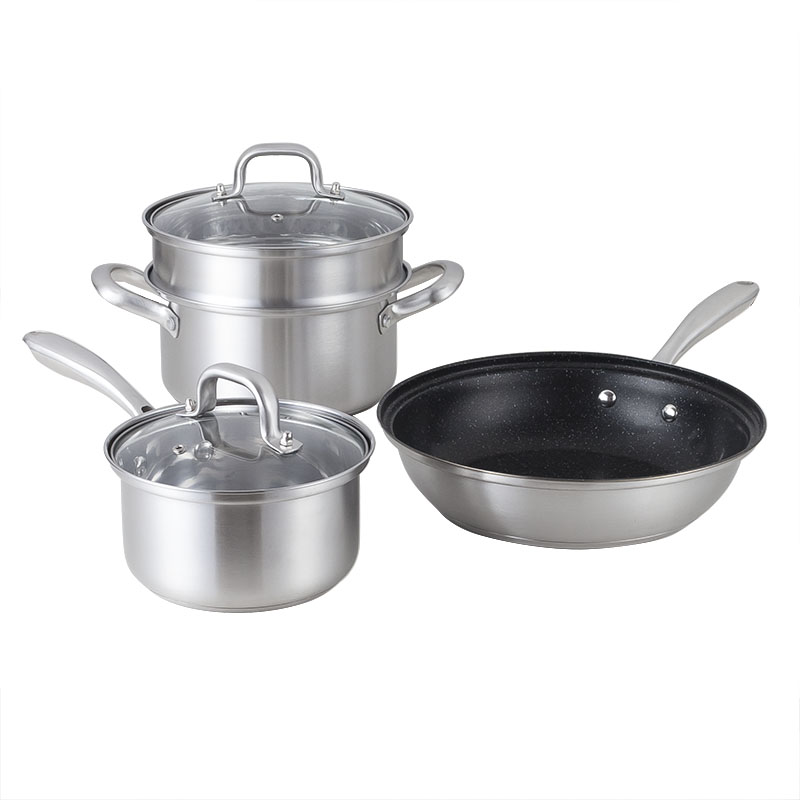
There’s nothing like a nonstick finish to prevent food from sticking, which makes a nonstick pan pretty much essential for preparing things like frittatas, pancakes, and crepes. But even when you’re simmering tomato sauce or steaming rice, you’ll find a nonstick surface a big help. When it’s time for cleanup, you won’t find yourself scrubbing to get off the residue that’s stuck to the pan. You can also use a skillet with a nonstick surface to fry steaks, chops, and hamburgers. Contrary to popular opinion, you will get good browning and delectable brown bits to incorporate into a delicious pan gravy. The only caveat is that you can’t use a nonstick pan over a high heat setting so it may take longer to get a good sear.
Today, the best nonstick finishes are durable and rarely peel or flake off. Nonetheless, over time, you will find that their stick resistant properties diminish and may want to replace your nonstick cookware. That’s why we don’t recommend paying a sky-high price for nonstick cookware set. Here’s our top picks for nonstick cookware sets you need in your kitchen.
Is Nonstick Cookware Safe?
Traditional nonstick coatings contain a chemical called PTFE. There is no evidence that finishes with PTFE are toxic or harmful to cook in. You also hear a lot about a substance called PFOA which used to be part of the manufacturing process. During production, it ran off in the water during production and didn’t become part of the final nonstick surface. However, the PFOA in the runoff is linked with health problems for people living near the factory and caused consumer concern about the safety of nonstick finishes. Since 2015, PFOA has been completely phased out and is no longer used in the process of making nonstick cookware.
However, nonstick cookware can release fumes if it’s overheated which can happen if it’s preheated empty or used over very high heat. If you’re nervous about nonstick safety, you can choose a ceramic nonstick coating. Made from sand, these finishes are not always quite as good at releasing food and aren’t as long lasting, but they can be safely used at higher temperatures.
Nonstick Cookware Dos and Don’ts
DON’T use nonstick cooking spray.
It builds up on the surface of the pan and is almost impossible to clean off. If you use it, you’ll notice your cookware becomes tacky to the touch and doesn’t release food as well.
DON’T preheat your pan without any food in it.
Although the general cooking wisdom is to preheat a pan with some oil or butter before cooking, you’ll be surprised that if you put your food in a cold nonstick pan, you’ll still get good browning results. If you do opt to preheat, stay nearby and place your food in the pan as soon as oil sizzles.
DO use a low to medium heat setting.
Although it’s unlikely you’ll ever heat your nonstick pan to high enough of a temperature to release fumes, you’re better off playing it safe by sticking to low to medium heat.
DON’T cut in your skillet with a knife.
You’ll wind up with little grooves in your pan that will affect its nonstick performance. Also avoid using the sharp edge of a stainless-steel spatula to slice into a hamburger to check for doneness or to cut a frittata into wedges.
DO use a nonabrasive scrubbing pad.
It won’t abrade the finish the way steel wool or one of those scrubbers with a rough green finish will.
Post time:
Mar-01-2023
